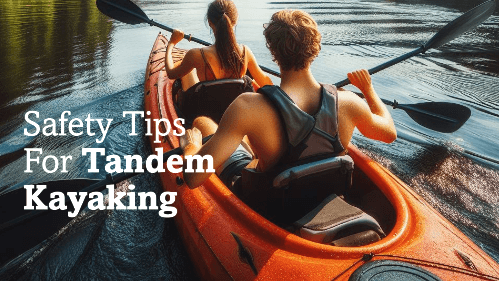If you’re intrigued by the idea of sharing the paddling experience, tandem kayaking might just be the perfect activity for you.
Picture this: you and a partner, in the same boat, coordinating every stroke as you glide across the water. That’s the essence of tandem kayaking—dual-paddle synergy at its finest.
Tandem Kayaks: Doubles for Paddling Together

Tandem kayaks, often referred to as doubles, offer a distinct way for pairs to enjoy paddling together and are especially useful for introducing newcomers to the kinesthetic joys of kayaking.
These longer and wider vessels provide additional stability and can accommodate speed preferences to suit a mix of paddler experiences, from kids and parents to grandparents and even furry friends aboard.
Teamwork and Dual Paddling

What makes tandem kayaking stand out is not just the shared effort but the unmatched opportunity it presents for building teamwork.
It’s not about how strong each paddler is; instead, what’s paramount is the harmony between the two. This shared approach ensures that even if one paddler takes a short break, the kayak remains in motion, often surprisingly swift, thanks to the combined power and efficiency of dual paddling.
Synced Paddling: Efficiency and Harmony
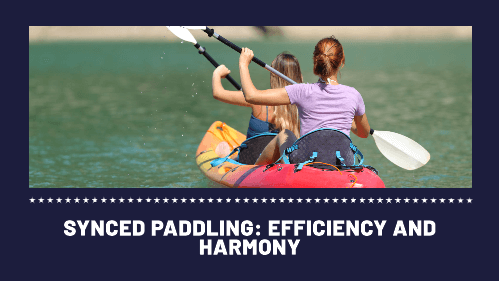
Moreover, when you paddle in sync, not only do you travel further with less effort, but you also steer clear of those pesky paddle clashes that could disrupt your rhythm or, worse, tip you over.
Whether it be for recreation, a workout, or a bit of both, tandem kayaking is a splendid way to synchronize your strengths with a companion and enjoy the splendor of the waters around you.
Seating Arrangements Matter
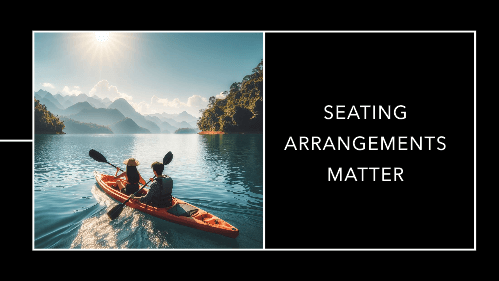
Ready to take on the challenge with a friend or family member? Great! The next step is to determine who sits where so you can make the most of your trip together.
In the following section, we’re going to delve into how intentional seating arrangements can make or break your tandem kayaking experience.
Seating Strategies for Optimal Performance
When you’re tackling the waves two-by-two, seating is more than just finding a spot to plant yourself; it’s about who’s going to be the ‘drummer’ of your kayak.
Think of tandem kayaking like a band. You’re going to find out about the vital role of seating arrangements in setting the pace and the rhythm.
The person in front is the metronome, dictating the stroke rate, while the one in the back needs to be in tune with these beats to keep the vessel tracking straight.
The Back Seat: Power and Navigation
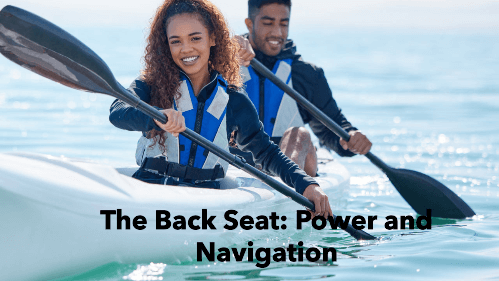
I’m going to let you in on a little secret: it’s usually best to have the more experienced or stronger paddler in the back seat.
That’s the strategy I like to leverage. This person acts as the director of the kayak, not only following the front paddler’s rhythm but also adding power and steering when necessary.
This back seat role isn’t just about paddling; it’s about reading the water, navigating, and making those split-second decisions.
Steering and Communication

Now, when I say steering and course corrections, I’m talking about paddling with purpose. The back-seat paddler uses forceful strokes on one side to act like a rudder, guiding the kayak‘s path.
It won’t feel intuitive at first, especially if you’re used to a single kayak’s agility. But with tandem kayaks, teamwork makes the dream work; you’ll need to trust your partner and communicate effectively if any unexpected changes arise.
Effective Communication: The Key to Synchronicity

In my opinion, communication can make or break a tandem kayaking trip. You’re in charge of keeping each other in the loop.
From a simple heads-up about a nearby obstacle to a need for rest, voicing your intentions or needs will ensure smooth adjustments.
I’d say it’s just as important as your life jacket. Why? Because clear communication leads to synchronicity; you work as one, and that’s the true beauty of tandem kayaking.
Synchronized Paddling: The Heart of Tandem Kayaking
When you’re sharing a kayak, the rhythm you create together is the pulse of your journey. Synchronized paddling isn’t just about moving at the same time; it’s about harmony and efficiency.
To start, the front-seat paddler sets the pace, while the back-seat partner is in charge of matching it. Why does this matter? It helps keep your kayak gliding straight rather than zigzagging across the water.
Avoid Paddle Clashes

You’re going to find out about how critical it is to keep your paddles from clashing. If they collide, it disrupts the pace and could even result in a capsize. By keeping an eye on each other’s movements, particularly the front paddler’s timing, you’ll move more smoothly and with less effort.
Effective Communication

Now, communication is the linchpin for synchronization. Whether you’re changing speed or direction, the person in the back should let the front paddler know before making a move. This way, both of you can adjust together and maintain balance.
Mindful Breaks

As for those moments when you feel the fatigue creeping in, remember that taking breaks is absolutely fine. In fact, I encourage it, especially if one or both of you are newcomers to tandem kayaking.
A steady rhythm is more vital than speed. Being mindful of your partner’s energy and skill level leads to a far more enjoyable – and safer – excursion.
Safety Measures and Handling Emergencies
I’m going to round off this guide with some critical advice on staying safe while enjoying the tandem kayaking experience. This isn’t just about knowing how to paddle; it’s also about being prepared for any situation that might arise on the water.
Paddle Clashes and Synchronized Movements
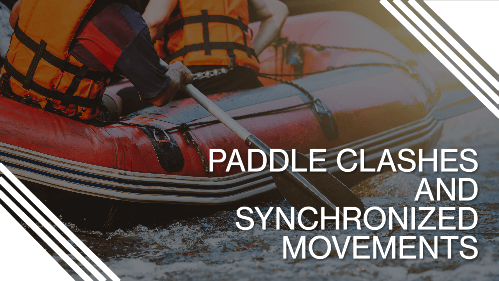
Paddle clashes in a tandem kayak not only disrupt your rhythm but can also tip you over, so synchronized movements are your first line of defense against capsizing.
In my opinion, there’s a lot of opportunity in learning the subtle art of paddling in harmony; it makes you and your partner a more cohesive and efficient team.
Safety Gear for Younger Members

When you’re planning an excursion with younger members, safety gear like PFDs (Personal Flotation Devices) is non-negotiable.
Choose something that resonates with you when it comes to ensuring your child’s safety. Positioning them in the front seat allows for constant supervision, and for added guardianship, you can place a young child between the legs of an adult in the back seat.
Dealing with Capsizing

As for dealing with capsizing, sit-on-top tandem kayaks are forgiving and relatively easy to re-board.
However, if you’re in a sit-inside model, that’s going to take more skill, and practice is key. If you’re venturing out with less experience, don’t worry too much about this — stick to calm waters and stay within a safe distance from the shore where you can quickly get help if needed.
Effective Communication and Handling Emergencies
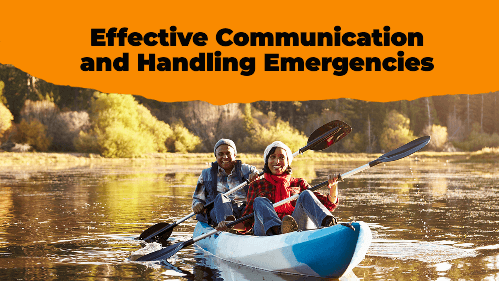
Communicating with your partner goes a long way in preventing emergencies. But if you do find yourself in a sticky situation, knowing how to handle it calmly can make all the difference.
Your tandem kayak can be paddled solo if one partner is incapacitated, just ensure the weight is distributed evenly by sitting in the back seat.
Remember, your first attempt at tandem kayaking doesn’t need to be your last. If today didn’t go as planned, use it as a learning experience to better prepare for next time.
Paddling together is a journey, and just don’t focus too much on perfection. As long as you’re safe and having fun, you’re doing it right. I really hope that you enjoy every paddle stroke on your tandem kayaking adventure.
